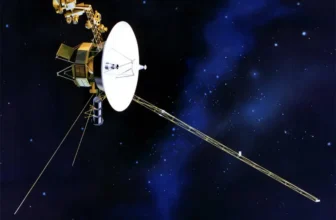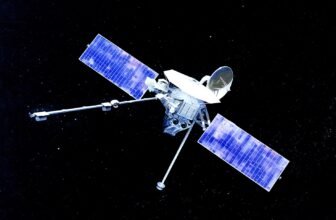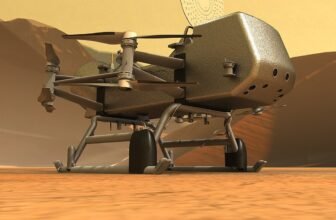
15 Incredible Facts About the Mars Rovers
From the red sands of an alien world to Earth’s mission control rooms buzzing with anticipation, the Mars rovers have captivated humanity’s imagination and advanced our understanding of the universe in ways we never dreamed possible. But behind every image, sample, and journey is a story, sometimes bold, sometimes heartbreaking, always incredible.
1. Sojourner: The Little Rover That Could
When NASA launched the Mars Pathfinder mission in 1996, the stakes were high. This was the first rover to attempt a landing on another planet in over two decades. The tiny rover, just 23 pounds and named Sojourner after abolitionist Sojourner Truth, was expected to last 7 days. It survived 83.
Its brief yet historic mission in 1997 proved that mobility on Mars was possible, and it became the first wheeled vehicle to roam the surface of another planet.
2. Spirit and Opportunity: Twin Titans of Exploration
Launched in 2003, Spirit and Opportunity were the Mars Exploration Rovers (MERs) designed to last just 90 Martian days (sols). Spirit ran for over 6 years, while Opportunity shattered expectations with a stunning 15-year journey. That’s more than 60 times longer than planned!
They weren’t just lucky. They were rugged, brilliantly engineered, and often benefited from unexpected boosts, like Martian winds blowing dust off their solar panels.
3. A 14-Year “Marathon” on Mars
Opportunity holds the record for the longest distance traveled on another celestial body. Over its mission, it covered 28.06 miles (45.16 km), more than a full marathon. That feat, achieved in Mars’ harsh terrain, stands as a symbol of perseverance and human ingenuity.
4. Curiosity’s Sky Crane Was a Sci-Fi Spectacle Come True
Landing a one-ton rover like Curiosity in 2012 required a landing technique straight out of a science fiction film. Engineers developed the “sky crane” system, a rocket-powered descent stage that gently lowered the rover on cables. It worked flawlessly, on the first try.
Curiosity’s descent was so dramatic that it earned the nickname “Seven Minutes of Terror,” and it remains one of the most complex space landings in history.
5. Rovers Sing “Happy Birthday” to Themselves
In a move that proves NASA engineers have a sense of humor (and heart), Curiosity was programmed to sing “Happy Birthday” to itself. It did so on August 5, 2013, its first anniversary on Mars. The lonely celebration was a touching reminder of the human connection to these distant machines.
6. Mars Rovers Have Experienced Dust Storms That Could Swallow a Planet
Mars is home to some of the largest dust storms in the solar system. In 2018, a global storm engulfed the planet, blotting out the sun for weeks. For Opportunity, which relied on solar panels, this proved fatal. The last signal was sent on June 10, 2018, and despite months of attempts, it never woke again.
The farewell message sent from NASA? “My battery is low and it’s getting dark.” A poetic paraphrase of telemetry data that moved millions around the world.
7. Perseverance Carries a Piece of History, and the Future
Launched in July 2020 and landing in February 2021, Perseverance is packed with innovations, but one of its most symbolic features is the plaque bearing a tribute to healthcare workers during the COVID-19 pandemic.
Perseverance also carries a cache system designed to collect and store Martian rock samples for a future return mission, essentially setting up a Martian relay race that may someday bring alien soil back to Earth.
8. Ingenuity: The First Helicopter to Fly on Another Planet
Perseverance brought along a small passenger, a 4-pound helicopter named Ingenuity. Originally planned as a short tech demo with 5 test flights, it went on to complete dozens of successful missions, proving that powered flight is possible on another planet despite the thin Martian atmosphere.
Its success opened the door to future airborne exploration of Mars and possibly even Titan, Saturn’s moon.
9. Mars Rovers Write Poetry, In Their Tracks
The wheels of Curiosity aren’t just for locomotion. They leave behind Morse code patterns in the sand: “JPL” (for NASA’s Jet Propulsion Laboratory). This “wheel signature” helps mission teams track the rover’s movement and slippage. And it also doubles as a stylish interplanetary autograph.
10. They Take Selfies Using High-Tech Arm Tricks
Ever wonder how rovers take those iconic selfies on Mars? They use a robotic arm-mounted camera to stitch together multiple images. While the selfies look like they were taken from a single angle, they’re actually mosaics created from dozens to hundreds of shots.
The result? Stunning portraits of these mechanical explorers surrounded by alien landscapes.
11. The Rovers Have Found Evidence of Ancient Water
One of the primary goals of the Mars rovers has been to determine whether Mars was ever hospitable to life. Spirit discovered silica-rich soil suggestive of past hot springs. Opportunity found hematite “blueberries,” tiny spheres formed in watery environments. Curiosity drilled into ancient lakebeds, finding clay minerals and organic molecules.
Together, they built a compelling case: Mars once had liquid water, and where there’s water, there might have been life.
12. Mars Time Is Real, and Scientists Live It
A Martian sol (day) is 24 hours, 39 minutes, and 35 seconds. That may seem like a minor difference, but for mission scientists, it adds up. During key mission phases, teams switch to “Mars time”, a schedule synced to the red planet’s rotation.
That means sleeping and waking up at odd hours, meals at 3 a.m., and coffee breaks when the sun is setting on Earth, but rising on Mars.
13. Rovers Are Geological Detectives
Curiosity is essentially a rolling science lab, equipped with instruments like ChemCam (a laser that vaporizes rock) and SAM (which “sniffs” gases for signs of past life). These tools allow it to perform on-site chemical analyses that would rival some Earth-based labs.
Perseverance takes it even further with instruments like PIXL, a super-precise X-ray fluorescence tool, and MOXIE, which can make oxygen from carbon dioxide, a prototype for future life support systems.
14. They Communicate With Earth Using Orbiters as Relays
The rovers don’t phone home directly most of the time. Instead, they transmit data to Mars orbiters like the Mars Reconnaissance Orbiter (MRO), which then beam it back to Earth. This relay system boosts signal strength and data rates, kind of like how your phone switches between towers.
On a good sol, a rover can send back hundreds of megabits of data, including high-res images, scientific data, and health updates.
15. Mars Rovers Inspire Earthlings of All Ages
From classrooms to comic books, from science fiction to NASA livestreams, Mars rovers have captured the hearts of millions. They embody what’s best about human exploration: courage, curiosity, resilience, and the drive to reach beyond our limits.
And maybe most powerfully, they make Mars feel just a little closer to home.
Conclusion: Rolling Into the Future
Each Mars rover, Sojourner, Spirit, Opportunity, Curiosity, Perseverance, and even the tiny flier Ingenuity, has told us a different story. They’ve battled harsh elements, survived dust storms, sent back breathtaking images, and revealed chapters of Mars’ mysterious past.
But their legacy goes beyond the red soil they’ve traversed.
They remind us of what’s possible when science meets imagination. When nations collaborate. When dreams are launched on rockets and land on alien worlds. As NASA and other space agencies plan the next steps, like bringing samples back from Mars or even sending astronauts, these rovers will be remembered as the pathfinders that made it all possible.
They weren’t just robots. They were explorers.
And their tracks, written in the dust of another world, will one day be joined by our own.





